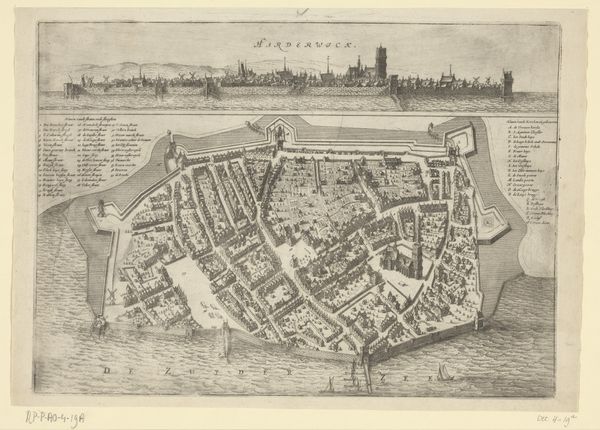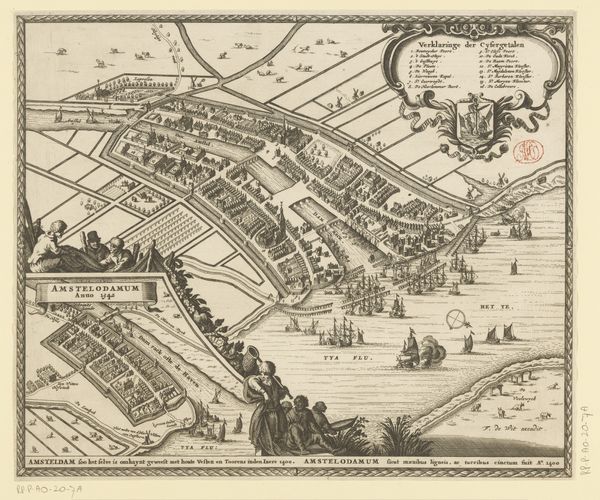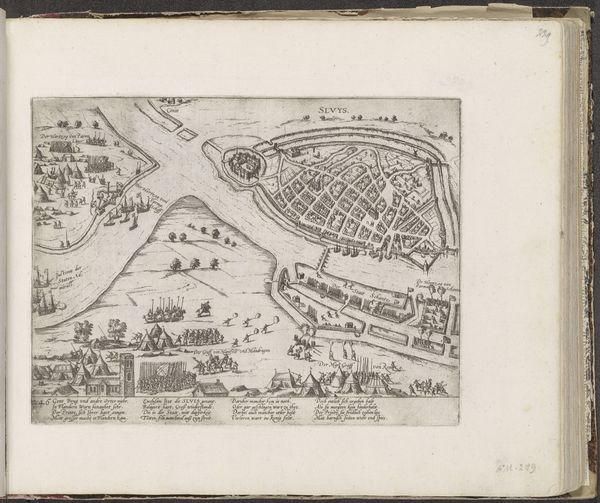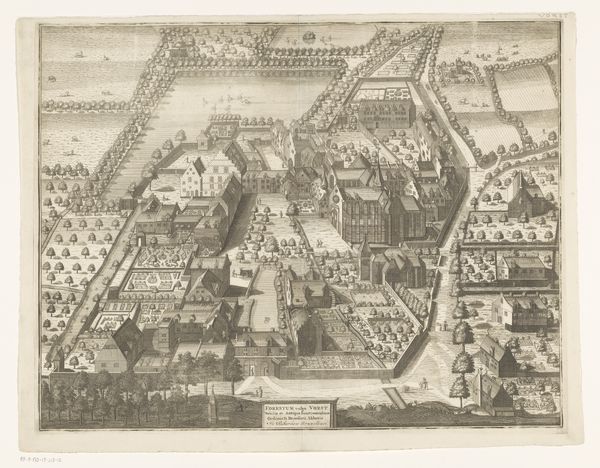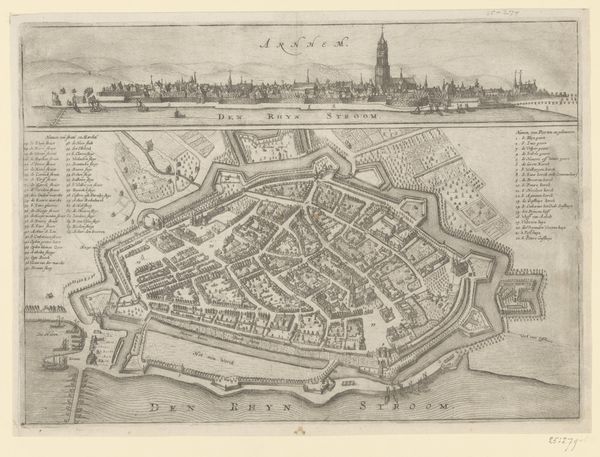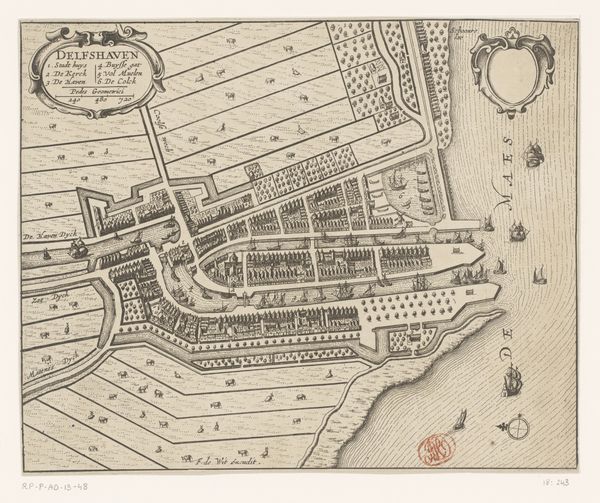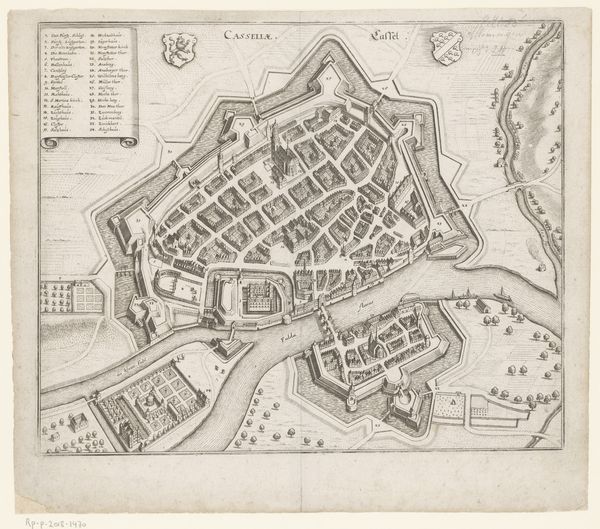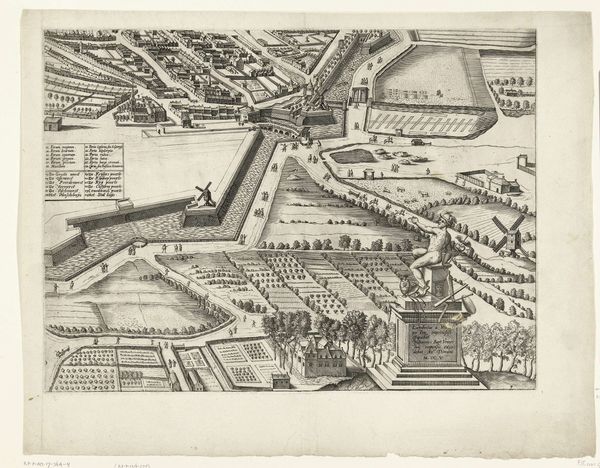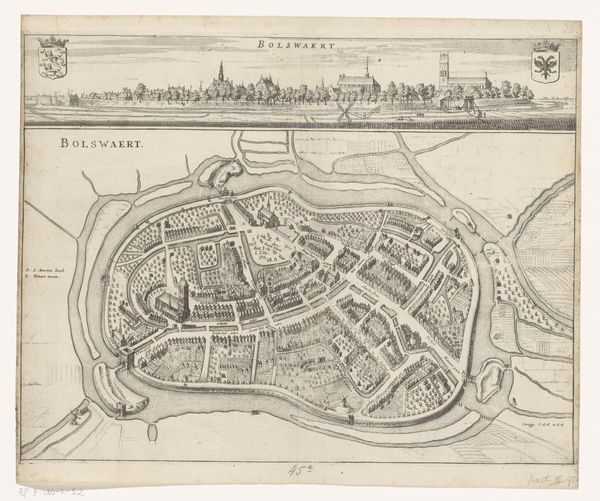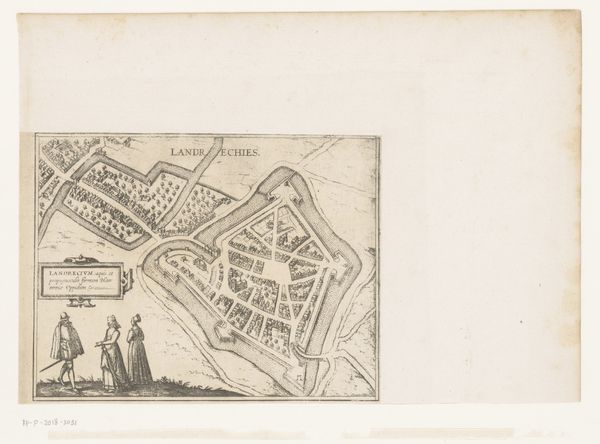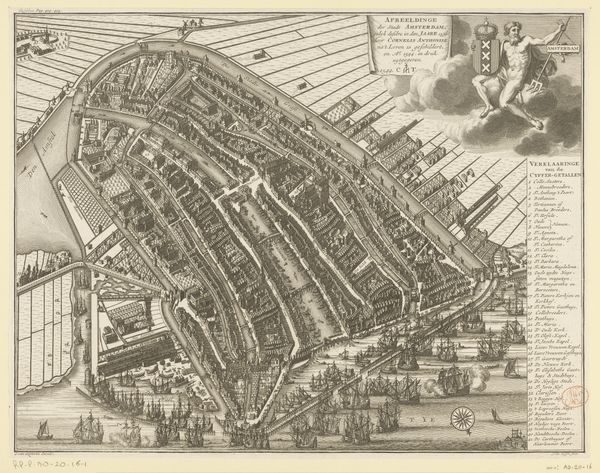
print, etching
#
dutch-golden-age
# print
#
etching
#
landscape
#
etching
#
cityscape
Dimensions: height 193 mm, width 298 mm
Copyright: Rijks Museum: Open Domain
Curator: Ah, here we have a fascinating bird’s-eye view, a map really, of Amsterdam. It's called "Plattegrond van Amsterdam met stadsgezicht, voor 1400," made around 1663-1664 by Jacob van Meurs. It's an etching, so it has that delicate, intricate line work. Editor: Intricate indeed! At first glance, there’s something almost utopian about this image. The way everything is so meticulously planned, the ships lined up neatly in the harbor…it gives this powerful impression of order and control. Curator: Exactly. Van Meurs really captured that Golden Age sense of Dutch pride and prosperity. Notice the detailed rendering of the city's fortifications. It was a very strategic port. What strikes you about it? Editor: Well, I can’t help but see the layers of power embedded in this city plan. It's not just a pretty cityscape, but a visualization of dominance and mercantile reach. How does it shape our understanding, even now, of space and ownership? Curator: I love that you bring up ownership. As the artist, I feel drawn into the minute details. Each little house, each ship—it makes you want to reach into the image and live inside the bustling city. You're almost seduced by the allure of 17th-century Amsterdam. Editor: Yet that seduction glosses over so many truths. Who benefited from that prosperity? This map doesn’t show the marginalized communities or those exploited in colonial enterprises. It romanticizes a very particular perspective. Curator: Of course. It’s an idealized portrait, not a comprehensive documentary. We can feel wonder for the craftsmanship. See how they suggest depth with line thickness! But let’s not take it as an unquestioned truth, right? Editor: Right. And maybe that's the power of these historical images—they offer a window into a past shaped by specific viewpoints and biases, prompting us to interrogate the stories they tell, and, just as importantly, the stories they omit. Curator: Well said! Maybe that constant questioning, the balancing of aesthetics with critique, is where the true value lies. Editor: Absolutely. The friction between beauty and truth. It keeps the conversation going.
Comments
No comments
Be the first to comment and join the conversation on the ultimate creative platform.

